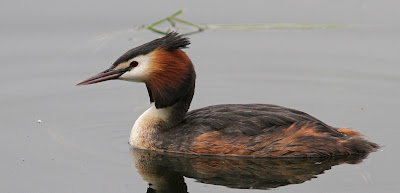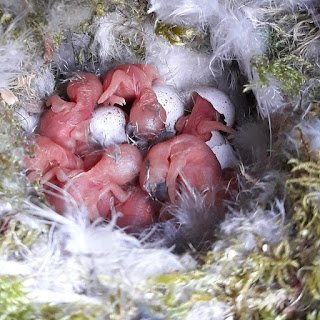Hello
Yesterday (Tuesday) I visited Hollowell and Ravensthorpe Reservoirs for a change but didn't see very much that was different, a Grey Wagtail at Ravensthorpe being about the best. The water levels at both is very high (similar to Pitsford) which might be suitable for breeding waterfowl but is not conducive to passage waders as the first returning birds will be upon us any day now.
Also yesterday, Eric and Ken Spriggs visited Thrapston Pits again and watched a 'reeling' Grasshopper Warbler, heard a Cuckoo and saw a Kingfisher. Several Scarce Chasers were on the wing too.
Regards
Neil M
Yesterday (Tuesday) I visited Hollowell and Ravensthorpe Reservoirs for a change but didn't see very much that was different, a Grey Wagtail at Ravensthorpe being about the best. The water levels at both is very high (similar to Pitsford) which might be suitable for breeding waterfowl but is not conducive to passage waders as the first returning birds will be upon us any day now.
Also yesterday, Eric and Ken Spriggs visited Thrapston Pits again and watched a 'reeling' Grasshopper Warbler, heard a Cuckoo and saw a Kingfisher. Several Scarce Chasers were on the wing too.
Regards
Neil M
 |
| Hobby courtesy of Robin Gossage. |
 |
| Collared Dove. |

































